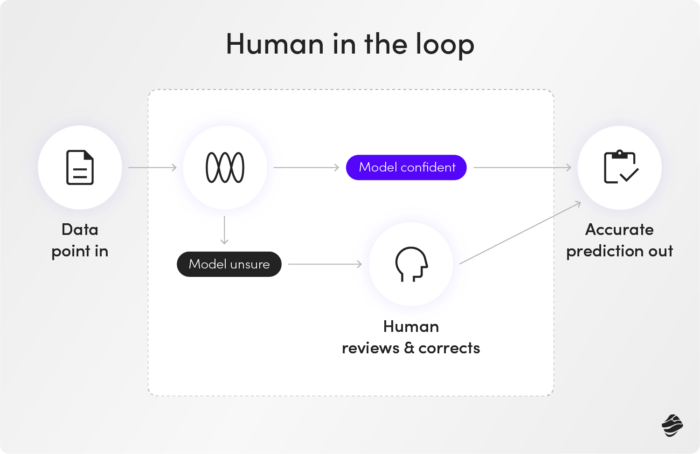- Home
- AI Glossary
- Human in the Loop Definition


Human in the Loop Definition
Human in the Loop Definition
What is Human in The Loop?
Human-in-the-loop (HITL) machine learning is a trend in AI where human intelligence is actively incorporated into the AI process, forming a symbiotic relationship that amplifies both human and machine capabilities. This approach involves humans in key roles, such as data labeling and providing feedback on AI outputs. By incorporating human input, human-in-the-loop enhances machine learning algorithms’ development, training, and accuracy, making AI systems more adaptable, ethical, and trustworthy.

The adoption of human-in-the-loop is driven by various factors, including regulatory requirements for transparency in AI decision-making, data scarcity, the need for oversight in high-stakes fields, adaptability in dynamic environments, and the necessity of human judgment in subjective decisions. The global market for human-in-the-loop is expected to grow significantly, demonstrating its increasing importance across industries.
The Benefits of Human In The Loop AI
Human-in-the-loop offers numerous benefits, such as higher accuracy, more adaptability, augmented intelligence, greater explainability, enhanced trust, improved subjective decision-making, and more efficient use of data. These advantages are particularly crucial in sensitive, dynamic, and data-scarce domains.
In practical applications, human-in-the-loop is used to moderate harmful content on platforms like Facebook and YouTube, aid in medical diagnoses, train self-driving car systems, automate call centers, detect financial fraud, and ensure quality control in manufacturing.
Challenges of AI Human In The Loop
However, implementing human-in-the-loop presents challenges, including slower processing speed due to manual human review, difficulty in recruiting and retaining human talent, the complexity of structuring workflows, mitigating biases, avoiding over-reliance on humans, and engineering complexity. Despite these challenges, the integration of human intelligence remains vital for developing robust, ethical, and accurate AI systems.
Ready to discover more terms?






